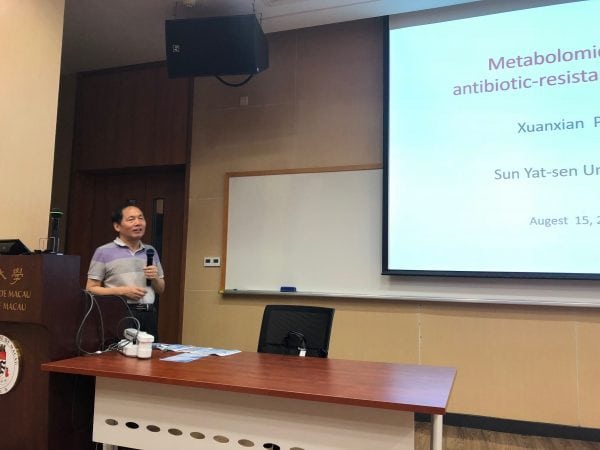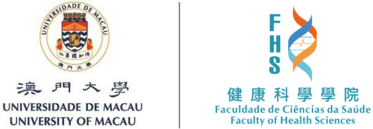| Talk title | Metabolomics and antibiotic-resistant bacteria |
| Speaker | Prof. Xuanxian PENG Professor Sun Yat-Sen University |
| Date & Time | 15 August 2018 (Wednesday) 10:00-11:00 |
| Venue | Room G004, E12 Building (University of Macau) |
| Abstract | Bacterial antibiotic resistance is a threat to human health and to the viability of animal and plant species in the human food chain. Because efforts to develop antimicrobials that kill multidrug-resistant bacteria have not been successful to date, there is an urgent need and high demand for agents that can kill or prevent infection with these bacteria.
Edwardsiella tarda is represented in the normal gut flora of humans and fish, but it is also an opportunistic intracellular pathogen in humans, fish and other species. Multidrug-resistant E. tarda has been isolated from fish and human, presenting significant challenge for its control. Here, we describe the metabolic state of antibiotic-resistant E. tarda, and demonstrate that exogenous alanine or glucose revert the bacterium to kanamycin susceptibility. Kanamycin-resistant E. tarda LTB4 (LTB4-R) were selected from kanamycin-sensitive strain (LTB4-S) cultured in medium with the antibiotic. Metabolomic profilings of LTB4-S and LTB-R were analyzed by gas chromatography mass spectrometry (GC/MS). Glucose abundance was suppressed to a greater extent in LTB4-R than all other metabolites tested and may have the most impact. However, the most strongly impacted KEGG pathway is alanine, aspartate and glutamate metabolism. Decreased abundance of alanine and glutamate was observed, with higher impact on alanine. The concentration of alanine and glucose modulates the concentration of NADH; consistent with this, NADH abundance was lower in LTB4-R than in LTB4-S. Then, we tested whether two metabolites, alanine or/and glucose, suppressed in LTB4-R, can be used to kill drug-resistant E. tarda with kanamycin including LTB4-R and E. tarda EIB202. EIB202 is a wild multidrug-resistant strain carrying a 43.7 Kbp conjugative plasmid that confers resistance to tetracycline, streptomycin, sulfonamide and chloramphenicol. We show exogenous alanine or glucose greatly restores susceptibility of multidrug-resistant E. tarda to killing by kanamycin, demonstrating a novel approach to killing multidrug-resistant bacteria. Similar results are obtained with other Gram-negative bacteria Vibrio parahaemolyticus, Klebsiella pneumoniae, Pseudomonas aeruginosa and Gram–positive bacterium Staphylococcus aureus and the results are also reproduced in a mouse model for urinary tract infection. The mechanism underlying this approach is that exogenous glucose or alanine promotes the P cycle, which in turn increases production of NADH and proton motive force and stimulates uptake of antibiotic. This study establishes a novel functional-metabolomics-based strategy to manage infection by antibiotic-resistant bacteria. In summary, we demonstrate that the bacterial susceptibility to antibiotics is strongly associated with metabolic states, and that specific metabolic profiles are correlating with certain antibiotic-resistance. Therefore, chemicals that revert the metabolomics profile of an antibiotic-resistant strain to that of an antibiotic-sensitive strain could potentially revert the antibiotic resistance. Our study proposed a novel approach to identify metabolic modulator through investigation of metabolomics, by which crucial modulators can be used for therapeutic purpose. |


